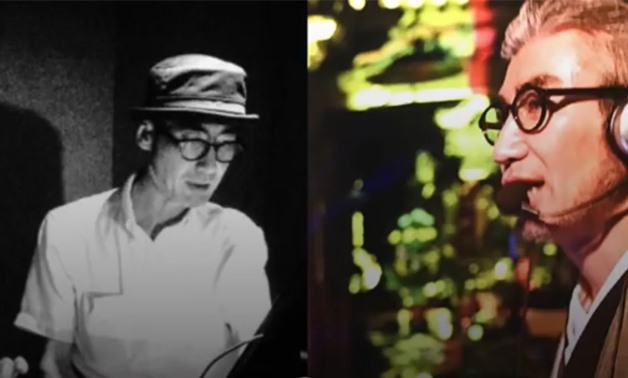
Gyosen Asakura, a former DJ turned priest produces techno services in a Buddhist temple twice a year. Screenshot from "Gyosen Asakura - the Buddhist DJ with a techno temple - BBC Trending" via YOUTUBE / BBC Trending.
CAIRO – 26 June 2017: Music and religious practices have always been closely intertwined. In the Jewish tradition, David sang the psalms. Coptic hymns are chanted in Coptic Orthodox churches until this day and Sufi “Inshad” (song) and “Madih” (praise) are still recited around the world. In fact, even long before Judaism, Christianity and Islam, music was a popular element of worship in Ancient Egypt. Things are not very different in Buddhism.
If you ever enter a Buddhist temple, it would not be unusual to find worshippers or monks chanting. You might even hear the sounds of windpipes, bells and percussion instruments as they collaborate to produce relaxing tunes that worshippers can meditate to. What you might not expect to enjoy in such a place would be a whole sound and light show of techno beats.
Gyosen Asakura, a priest of a Buddhist temple in Japan, had a strong passion for music even after quitting his job as a DJ. Twice a year, inside the dull-looking Shoonji temple in Fukui city, he holds special services.
“I received a lot of reactions from the public, both positive and negative,” Asakura told the BBC about his services.
Even though the services have received mixed reactions from attendees who believed Buddhist prayer should be quiet, videos have impressed the online audience. The services are filled with electronic beats and impressive lights.
Asakura said that the project’s aim was to introduce individuals to “pure land.” Asian Studies Professor Denis Hirota wrote in his book “Toward a Contemporary Understanding of Pure Land Buddhism,” the pure land is a supreme goal that human beings aspire to. In the Buddhist faith, it is believed that reaching the pure land is a step towards humans reaching a perfect awakening.
According to Paul Ingram’s article “The Symbolism of Light and Pure Land Buddhist Soteriology,” glimpsing pure land is similar to experiencing dazzling lights that blot out “the phenomenal surrounding world.” Accordingly, Askaura through his services presents a whole show of dazzling lights hoping it might offer humans a glimpse of that hardly-attainable pure land.
In an interview with the BBC, Asakura clarified that the use of light is not new in the temple. For hundreds of years, Buddhist temples’ light sources have been adorned with shapes to reflect the light and beautify it. He believed his approach is just employing electricity to achieve the same purpose. In the same sense, he added that he hoped ideas from priests like him would make passing on the Buddha’s ancient message to individuals today easier.
Asakura is not the first to have made the connection between electronic music and Buddhism. Jonathan Harvey, a British composer was inspired by Buddhism after he started meditating, which led him to write two Buddhist songs that premiered in the city of London festival in 2004.

Comments
Leave a Comment